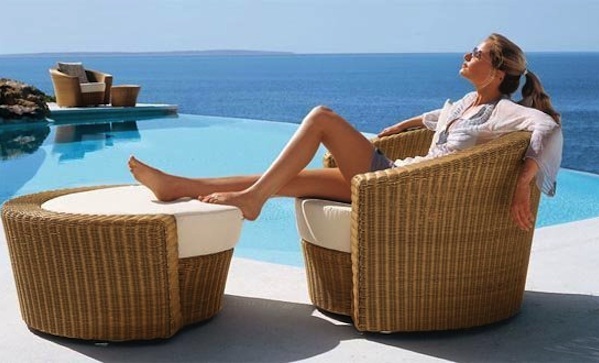Remember when you got your first full-time job and your first real apartment? You probably drove to IKEA, bought just about every strange-sounding product in sight and spent hours getting personal with an Allen key.
That was then. You’ve grown up a little since then, hopefully you’re making a little more money. Maybe you’re sharing a place with your girlfriend or wife now. And frankly you’re sick of the torn vinyl dining room chairs, the chipped coffee table, the spaghetti sauce stained couch, all circa 2002.
So what’s next? Do you just throw it all to the curb and head to Crate and Barrel? Maybe not. Blowing your budget on expensive, conventional furniture isn’t your only option, says art and design consultant Troy Seidman, who runs the online shop caviar20.com.
“I don’t like talking about buying furniture as an investment, per se, but you should definitely think in terms of resale value,” Seidman says. “There are a lot of pricey pieces you can buy but five or ten years from now many will not retain their value, in fact, you’ll lose 50 to 90% of the value you paid. Then if you want to sell them, few auction houses or vintage furniture dealers will take them and you’ll be left with Craigslist or a consignment shop.”
A smarter alternative, he says, is doing research on websites like 1stdibs.com, for instance, and finding a few vintage pieces from designers in demand – like Hans Wegner, TH Robsjohn-Gibbings, Paul Evans and others. Furniture from these respected designers, if well maintained, will likely retain or even increase their value over time.
“If you buy a good designer who’s collected,” Seidman says, “the piece will hold its value in a way that new furniture, often no matter how expensive, will not.”
What kind of furniture should you invest in? Seidman suggests if you’re starting out and you have a limited budget, look at lighting: “Besides adding character and ambiance to a room, vintage light fixtures or table lamps are undervalued, which means in most cases you can find beautiful pieces that are well priced and in very good condition.”
Lighting is also a good place to start, he says, because by virtue of where lighting is placed – on the ceiling, in the corner of a room or on a table – it’s less vulnerable to damage. That means, when the time comes and you want to sell it, you’re more likely to get your investment back. Makers to look out for: Lyfa, Sciolari, Lightolier, and Fog & Morup, to name a few.
If you’re looking for furniture that retains its value over time, what should you avoid? Seidman says generally stay away from large sofas or dining room tables. “You want to think about resale value or portability – so consider a good reading chair or a pair of chairs, even a coffee table.”
But, he says, be careful if you plan on placing the pieces you buy in high-traffic areas. If you – or the kids or cats — are prone to destroying stuff over time, investing in furniture with good resale value might not be right for you.
For a range of other home ownership topics, be sure to visit the RBC Advice Centre.
____
Photo courtesy of Wicker Paradise.


